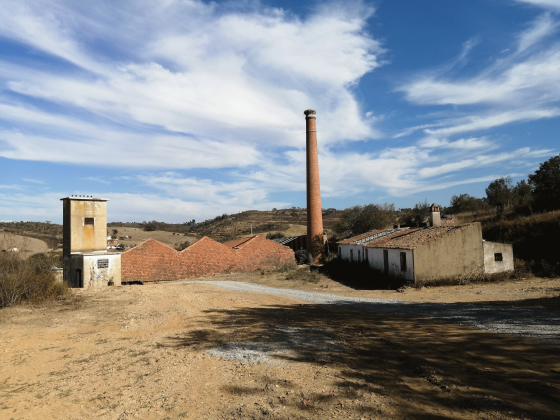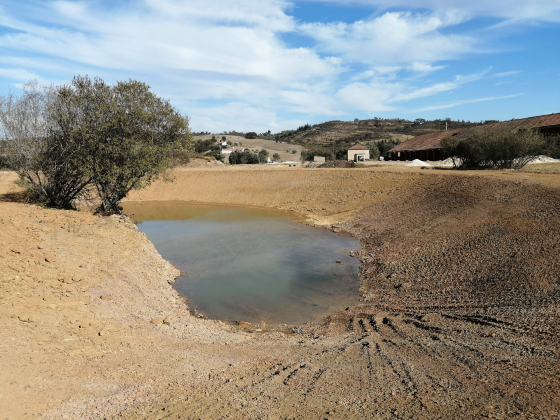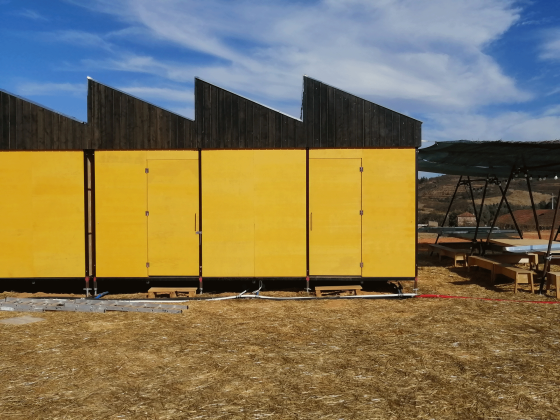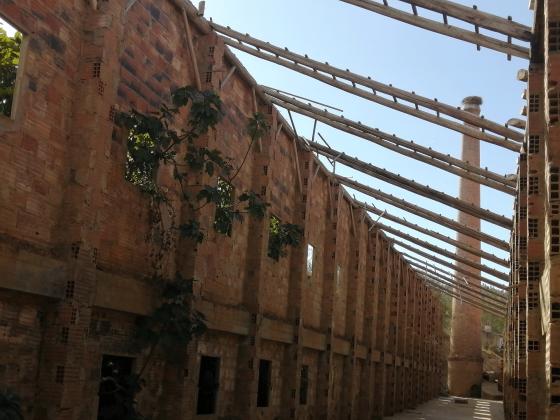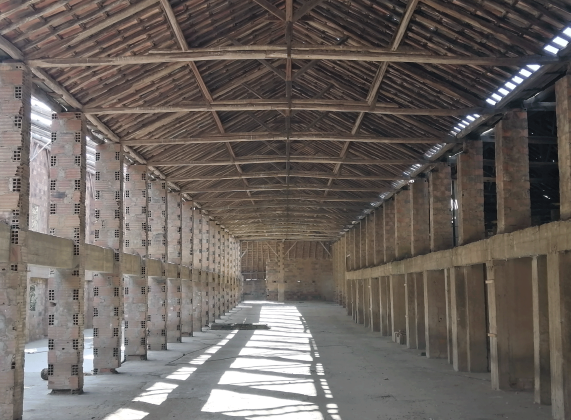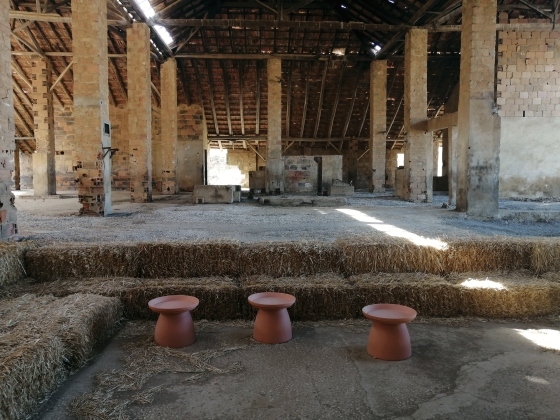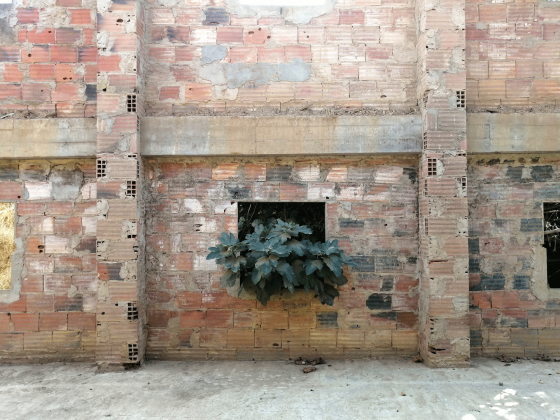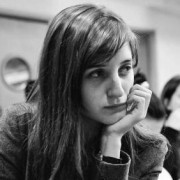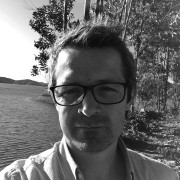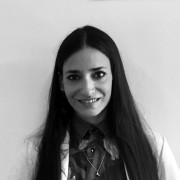Rural Potentials for a Sustainable Future
Sebnem Soher’s conversation with Diogo Dias Coutinho and Mariana Dias Coutinho of CLARA – Center for Rural Future focuses on the potentials of the Odemira region in welcoming creative and artistic practices to solve the issue of desertification of the area.
Sebnem Soher: Can we start with the name of the project? Which title and description do you prefer? CLARA Project, CLARA Lab, Center for Rural Future? And where does the name come from?
Diogo Dias Coutinho: Let me tell you how it started. It started with the name “Fábrica”, because it was related to the identity of the place (a former brick factory) but then, along the way, we realised that we didn’t have to pursuit that identity because the building already had that presence and the name Fabrica had its connection to art but also to industry. So we decided to lose that name and we created “CLARA – Center for Rural Future”. Within that, we foster experimentation and the concept of a lab is reflected on the website domain.
Mariana Dias Coutinho: When it’s more institutional, we use the full name: CLARA Center for Rural Future. But usually it’s just CLARA, because it is such a strong and straightforward name. We like that it’s also international, it has lots of associations and meanings. Besides being a Portuguese name, it means brightness, clarity. It made perfect sense.
SS: What is the main aim of CLARA? To become a research centre and to produce new knowledge?
DDC: Actually, the main aim is to value local resources and bring sustainable development to this region of Odemira. The aims of the association and the project are not centered at CLARA. CLARA is the vehicle for implementing sustainable development in this larger rural region. We are doing some interventions outside CLARA infrastructure and at the end CLARA is more than the space, it’s all the interactions with the community and all the work that will be done from that space.
MDC: Transforming a derelict brick factory that once served as an economic and social anchor for the region into a Center for Rural Future, we host various activities such as residencies, cultural events, workshops and conferences for ecological, social and cultural activism and participation, volunteer campaigns and ethical tourism at the intersections of art, design, architecture, social entrepreneurship, farming and ecology.
Regionally anchored and internationally connected, we are bridging the gap between the urban and the rural and create shared values. Promoting dialogue, experimentation, research, innovation and the transfer of knowledge, we challenge patterns of thinking and behavior, and explore contemporary solutions for the revitalization of low density regions.
SS: Who are the people behind the project? Who are the founders, the creators and of course the participants?
MDC: My father was working as a doctor in Odemira back in 1970s when they gifted him a very small piece of land for saving a life. Then my family bought more land and built a house near the lake. We started coming here often in the following years, for vacation time and whenever it was possible.
DDC: When we met 17 years ago and I came here, I also fell in love with it. We started doing some projects and in 2008 we bought this old brick factory. For many years we were thinking what we could do with it and how could we bring together our dreams and our preoccupations. I am coming from naval engineering but I worked in tourism. Mariana is an artist. We started talking and reflecting with some friends, other artists, designers, architects and together we came up with the concept. In 2017, we created the association Project Earth who manages the project.
MDC: So it started with the two of us. Because we were in this phase of our lives, questioning what were we going to do, how could we become more responsible, active and participating in contemporality. We started talking to our friends, more people decided to join us and then other people shared their testimonies and ambitions with us and we became this aggregating force of by now 17 elements in this non-profit organization.
DDC: Yes, we founded the association and applied for a funding from Turismo de Portugal, which allowed us to develop the first phase of the project, which is the CLARA Camp for accommodation and the restoration of the roof of the old brick factory. This first phase will provide the minimum conditions to start activating some of CLARA’s program and activities.
SS: And in two years, did anything change in your perspective regarding the initial code, the manifesto of the association?
DDC: During this time, we talked to different people, friends and colleagues but also we met with Turismo de Portugal and the Municipality of Odemira. We access the social report of the municipal area and we understood that the main focus should be to address the human desertification. This problem has lots of causes and consequences. People are starting to go out and the territory becomes deserted and of course this creates other problems. The biggest aim of the association is to bring people to reactivate the social, cultural and economic tissue of the region.
SS: Can you tell a little about all the small projects on your agenda? When I look at the team, I see a big diversity in their profiles and backgrounds. How do you manage different ideas, is the project open to any kind of sub-organization and how are these ideas being organized in space?
MDC: We had defined some guidelines. We already established CLARA mission and values and we defined some areas of intervention: Sustainable development through cultural, ecological and social interventions. And then, for a long time it was just a think tank. Since we had kind of an expertise in our own areas, we would just all come together and share our experience and knowledge. We would think together and build a concept. The organization was very conceptual and not at all rigid.
DDC: We didn’t want to have a vertical structure. It shouldn’t have been only our dream but a common dream and we would make it possible for different people to come together and develop their own dreams. We wanted to welcome new people to this community.
SS: How do you reach out or are people approaching you?
MDC: It is kind of a mixture. We have a strategic board. We have weekly regular meetings to define objectives and goals and make plans but beyond that we are very open to welcome proposals from external collaborations.
DDC: We are of course still in the process of establishing those procedures of decision making. Part of the idea is for example to work with partners. We will create our own activities but it’s important to invite people with the knowledge and network to join us and organize their activities.
MDC: We already have people who made some proposals and now we are gathering the conditions to implement them.
SS: In that case I want to ask about your economic model. How was it possible to realize this project, as an example to these kind of projects in general?
DDC: It’s really hard. It’s hard to manage being innovative and experimental and attract investment all the time. Attracting investment, even from the institutions, is easier with activities, rather than rebuilding. What we did was, applying for a public funding, but a project always needs a certain percentage of its own capital. If you don’t have those resources, it’s quite hard to manage the financial system. It’s crucial for any social or environmental project nowadays to have its own sustainability. So what we’ve created as our own sustainable model is, since we have now this accommodation and restaurant facilities, to have a stable revenue by welcoming people, similar to the services of an hotel, and then having all the other activities with sponsors, financial support applications or participants’ fees like for the workshops. It’s a mixed business model. It has and has to have lots of ramifications.
MDC: To be clear, we have to say, a project like this demands lots of personal effort. In the beginning it was based mainly on individual investment. For a long time, there was just people believing in it and investing their own time, energy and knowledge, in the future this will be balanced and rewarded.
SS: Now that project has a base and started running, each new project will come with its own idea of financing and possible applications for funding, sponsorships...etc.
MDC: Yes, the idea is that every project works like an autonomous project with their own separate economic model.
DDC: In time we want to have a funding to support, grant some new projects. With these activities we may create this reserve fund. This is not a rich region. So imagine, if we have a workshop, where people have to pay, we want to provide the opportunity for the local community to participate, to have access to knowledge. We want to involve the local community by creating these mechanisms.
SS: What about the existing resources of the region and of the land? Is using the local resources, material and the knowledge a priority? Also how important is reuse in CLARA?
DDC: That is a critical part of the original concept, to value local sources. This is the main problem of human desertification. If a territory is deserted, you are abandoning lots of resources that are there and valuable and are not being properly taken care of. For a small country like Portugal, to have those vast lands not being taken good care of, is a loss of resources. We are trying to identify those resources and make use not just for us but for the local community. With this perspective, when we looked at the factory, we saw the clay inside the old kilns, we saw some wood from the factory, some structures.
MDC: We think a lot about circular economy. How can we revalue, reapply, reconfigure and become sustainable in that way?
DDC: We are also thinking about revaluing the waste of other communities, for example the local farmers and inhabitants, when they cut the trees for cleaning normally they still burn the residues and it is dangerous because of the forest fires. In that case we look for ways of reusing those residues. Can we produce energy, can we produce compost? We try to think about the reality of the territory and establish these connections. It’s important to connect different communities. There are people who were born here, there is a long history with foreigners, who came around the 1960s and are still coming and now we have this new wave of young Portuguese who are coming to live here as well. So we are looking for ways to create links between communities.
SS: When you are working against the abandonment of the region, when you talk about bringing people here or back here, when you think in a larger scale, how is the project’s concern about who to attract? In the urban areas we are always talking about gentrification and how the population changes as a result of some larger dynamics and how the change results in the new patterns of usage of space, etc. Shall we be discussing about the socio-economic changes in the rural, even though everything seems to happen much slower?
MDC: Whenever we are talking about bringing people, anywhere, we have always to think very carefully, right? We always have to think about how to welcome the newcomers in a way that we continue valorizing and preserving what already exists and how to create the conditions for both communities to engage and collaborate together. We are first aiming to attract the creative community, artists, designers or digital nomads who can have that flexibility, who can work remotely, reinforce their projects here, and propose an experience that will affect them and foster individual as well as social transformation.
DDC: I think humanity will have three big challenges now: the climate change, migrations and robotics with artificial intelligence. Migrations are already happening as a result of climate change and we have to find solutions on how to integrate people to local communities. First thing is really to work on the identity of the communities. If the communities have a strong identity, then the newcomers can integrate the substantial parts of their existence. This is why preserving the cultural heritage is really relevant in projects like these. We believe that creative communities will have the potential to transform the space with a critical perspective. We don’t want a development that means “more”, but diverse, bringing difference together.
SS: That leads us to my next question. How is CLARA working on macro-scale? We have been talking about micro scale, the local knowledge, the local communities. But I understand it’s not only about creating a sustainable centre in that one place. Do you think about being an agent of larger social change?
DDC: I think so. That is why we want CLARA to be a place of thinking, of debate. Because these social changes, this utopia is not something written, it is something that needs to be worked on, something organic. Of course, we see examples from other places, where similar ideas are being implemented. We don’t see this capitalist economic system, as it is, as sustainable. This infinite idea of growth is not sustainable. While most of the resources are accumulated in few, most of the people suffer from the conditions. On the other hand everybody has their own identity and should be valued for that. So we have to create while being in harmony with the environment and within our social interactions. We also have to rethink our relation to technology. Our lives have improved in so many ways through technological advancements but we are losing the human contact.
SS: Are these concerns being translated also into architecture? How do they affect the space-making processes in CLARA?
DDC: Within this same framework, for me architecture has to have this regenerative capacity; not only not having an impact but also to be able to regenerate. If you are building something, it’s not just the building, but to plant trees around it to create this living. Using and reusing water... The architecture should be regenerative. We find very interesting and have been following the Living Future Institute in Seattle, US. They have a certificate program, all based on a regenerative process. It’s also always related to local resources. But not to contradict with all, we also find architecture as a way of attracting people. It is an important tool to transform all these abandoned places not only for living but for short term to attract people. Architecture has a big influence on that. We are not talking about architecture as the end product of course, it is all the process, all the participatory processes. Bringing people together to have the experience of doing things on their own. Many people who moved around here are doing their own constructions. It would be very interesting to put together some knowledge of using the local material and create awareness.
MDC: For me architecture is the main responsible, main creator of spaces. What I’ve always found interesting is the phenomenology of things. The space is created, then it has its own needs, its own power, fragilities, its own inner characteristics. It’s always interesting to compare how architecture is acting in the urban or rural context and scale. The context is completely different, even the need to appear is very different. In urban areas the results will always be different because they need to create attention in a big competition. We can talk about egos and stuff like that but that is completely weird for me because, in my opinion, architecture should be social. It should be for people and accessible to everyone. It is one of the tools that bring people together. I would like to reflect on that kind of values within architecture. When the architecture could go out of the studio, when architects could put their hands on the work and aggregate new people who already have the experience and those who don’t, and they all together think about the project, the local resources, and make changes or compromises together; that would be a social exercise.
DDC: In that aspect, one of the things we wanted to bring to CLARA was multidisciplinarity. We want to bring an architect into contact with a farmer, with a product designer, with a biologist. It would be a more innovative and productive process.
MDC: And a fair one, because everybody would be able to participate.
SS: Before we change the subject, I want to ask about the factory building. It has a strong presence and a big impact, especially in the rural scale. On the contrary, the architecture you are more interested in is more in a smaller scale. How are you planning to work with the building even if it’s just a shell now but offering –let’s say- this phenomenological experience?
MDC: The factory is a pre-existent element, so we inherited that. We are not interested in creating more of that language but trying to understand, valorizing and preserving its potentials.
DDC: It’s more a question of adaptation. We are not going to turn our back and start from scratch but use what’s there and transform it accordingly.
SS: You mentioned that the factory also has an importance within the history of the area and you are respecting it very much… The interventions I saw in the building including your artistic installation are celebrating, honoring the building. Is that attitude merging with your social sustainability idea?
MDC: There were three generations in that building. It was an important place of production before it bankrupted in the 1980s. We will have the welcoming, the conferences, the debates and the knowledge productions there. So it will be a sequence in terms of content. But we will also respect the architectural identity of the building. We are already looking at the past in order to learn from its previous mistakes. We look for innovative ways of intervening.
DDC: It has a lot to do with the cultural identity of the place. Lots of people have been working there and they identify the space as a place for economic activity. For us it’s important to keep that identity, to integrate others, to bring people who worked there and have connections with the building in contact with the new people we are welcoming.
SS: Can we talk about a mutual learning in terms of space-making?
DDC: We are in contact with universities. This will be a long and slow process. One of the projects we find very important is mapping. Mapping will be done in different categories. For example, one can be the human resources, one might be all the services offered here, natural resources and of course materials and technologies for architecture. First phase of every project should be knowing the local resources, and architectural production will pass through that reflexion. After that we can analyze what we can do with those resources and what we can bring in terms of innovation that can improve the living conditions or the regeneration of the territory in terms of the natural environment.
MDC: We also consider CLARA as an object, as a big archive. So everything that will be done at CLARA will be well documented and archived. The archive will be public, accessible to everyone. The surveys, the mapping, this kind of different experiences and experiments... If you have someone who comes to the territory with the aims of being sustainable, being responsible, innovative but doesn’t have the skills or knowledge, this person or group can contact CLARA. At that point CLARA can work as a consultant or a bridge maker to put this person in contact with that architect or bio-farmer or someone with that specific knowledge.
SS: What are the near future projects that will happen?
MDC: In the most near future we are promoting now two workshops on soil microbiology and compost making for beginners.
DDC: As Mariana mentioned, CLARA has different types of projects. On the one side there are the investment projects, which need investment for the growth and development of CLARA infrastructure. We have CLARA Energy, having the solar panels installed for CLARA operation; the CLARA Lab, which are the four workshops (ceramic, paper, textile and wood & metal); CLARA Mobility, having vehicles to transport people around the territory; CLARA Lodge, to rehabilitate an old building and have more accommodation, but also can grow to be a wider project to rehabilitate more buildings on the territory outside CLARA site. We have the CLARA Organic, which is the Food Culture and Lab Restaurant and bio farming. These are the investment projects. Then we have the events, like conferences, seminars, workshops, where we can invite people or partners to do their own activities. Events can also be exhibitions, presentations, parties, concerts, talks, dinners… There’s a program of activities for companies or other organizations to come and have an interaction with the land, art and architecture.
MDC: CLARA also thinks about the next generation and will have rural camps for kids, where like a summer camp, they can come together, have some memorable experiences that engage art with nature, and foster them to develop either the individual as well as their social skills. I also want to enhance our artistic residency program. This is a long-term stay program from one to three months, where artists, designers, thinkers, can come, stay, work and have an ongoing critical reflection at the relation with ecology, art, science, culture and heritage, social engagement and activism.
SS: Are you making mistakes on the way and changing course sometimes?
MDC: All the time! We, the CLARA team are professionals profoundly committed, and we believe in our values and vision, we are awarded of the difficulties of such a project and accept life as a process. We are not afraid of making mistakes.
DDC: What matters is what you learn from mistakes.
MDC: For me a major failure would be apathy for example. So, if you can still reflect and react, it will bring an alternative and eventually an evolution.
Related Content:
-

Let's Pastrami
-

Quake Museum
-

Tree House
-

TM8
-

NEST
-
"We Have To Think About What Progress Is"
Ponto Atelier is a young office from Portugal with works varying in places, programs and scales. They are based in Madeira Island, in the Atlantic Ocean and they are about to become much more visible soon, with several ongoing projects to be completed and their participation at “Fertile Futures” Exhibition, the Official Portuguese Representation of the Venice Architecture Biennale 2023, curated by Andreia Garcia. Şebnem Şoher talked to Ana Pedro Ferreira and Pedro Maria Ribeiro, founders of Ponto Atelier about their inspirations, being on an island and what it means to be sustainable today.
-
Future Vision for a Healthier Greener City
After the meeting held as part of the Archi Design Timber Talks Series on November 1, 2021, at Bahçeşehir University Faculty of Architecture and Design, Kevin P. Flanagan, the guest of the event, answered the questions of Demet Sürücü and Melek Elif Somer about the role of wooden structures in the future of cities.
-

A Refuge in Córdoba
 03.12.2019
03.12.2019



